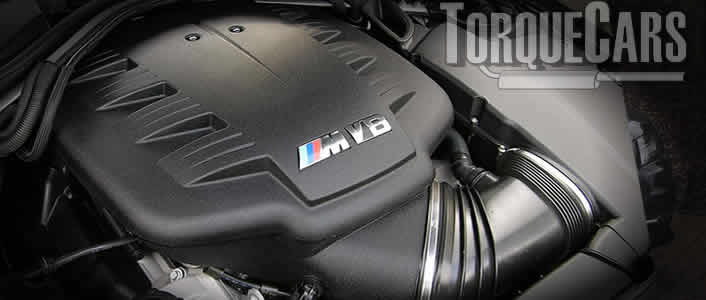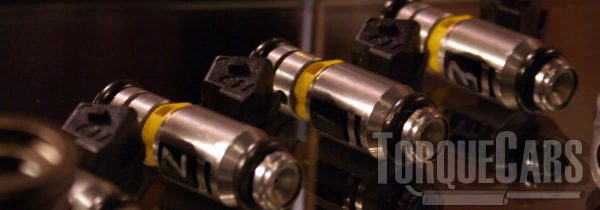Tuning the BMW S65
"All you need to know about performance parts and tuning the BMW S65 engine!"
Carref prides itself on providing the latest tips and guides to your modification project.
In this article we detail the best approach to S65 tuning and point out the optimum mods that work.
A BMW S65 gives a fun base for your project and with carefully chosen performance upgrades like ECU maps, turbo improvements and camshafts you will really enhance your driving pleasure.
We rely on our visitors to pass on tips and tell us about their projects and what worked on their car, and this article is the culmination of the feedback we have received. First let us look at the history and specs of this engine and then consider which tuning modifications work best on it.
History of the Engine
It was a lovely sounding NASP V8 fitted to the M3. The S65 replaced the S54

It came as a 4.0l and 4.4 version, both sounded fantastic and perform really well.
- S65B40 (414 hp) at 8,300 rpm 400 N⋅m (295 lbft) at 3,900 rpm
- S65B44 (444 hp) at 8,300 rpm 440 N⋅m (325 lbft) at 3,750 rpm
There was also a motorsport version of the S65 named P65B44
What are the most effective S65 upgrades
When talking about the best ultimate for your S65 engine, we are going to concentrate on the tuning mods that give the best value for money.
Tuning the BMW S65 and best S65 performance parts.
The cam profile plays a big part in the engines power output so cam upgrades make quite a large difference. The intake and exhaust durations will alter depending on the chosen cam profile, so large power band gains are on offer for cam upgrades.

Fast road camshafts tend to increase the performance over the rev band, you could sacrifice a little bottom end bhp but higher rpm power will be better.
Competition camshafts, increase the higher rpm power band but as a result the car will not idle smoothly and low end power nearly always suffers.
On a car driven daily you need to match your torque band to your typical driving style.
I'd be shocked have ever thought a S65 Race cam is a pleasure to live with when in heavy traffic.

Some S65 engines respond better to more or less aggressive cam durations check your engine on a rolling road.
The engine timing and fuelling also will make differences on the bhp gains you'll get.
A longer valve duration can alter the bhp band and on most engines the exhaust and intake durations do not need to match, although most cams and tuners use matched pairs there are some advantages to extending the intake or exhaust durations.
Please watch our introduction Video tutorial to car tuning. Be sure to subscribe and support our new channel.
How to tune your car
- Improve the handling
Focus on Suspension improvements, such as coilovers and make sure the bushings are in good order and that the alignment is correct. Then focus on improving the brakes, with a big disk brake conversion kit and fast road brake pads.
- Remove restrictions
Focus on the intake and exhaust with filters being the common point of restriction in a tuned car. Intercoolers may also become restrictive on turbo engines so this may also need to be uprated.
- Burn more fuel & air
Increase the fuelling so it matches the air coming into the engine. The ratio is important so you need to improve the fuel pump and injectors, so the head mods, big valve conversions, fast road camshafts and forced induction upgrades extra supply of air is adequately met.
- Test and replace any weak parts
Weak areas are commonly the clutch, the turbocharger and pistons and crankshaft in a highly tuned engine. Makes sure these components will cope with your power aspirations.
- The Tune or Remap
A cars ECU controls the fuel, timing, spark and even the turbo in some cases, so to fully extract your gains you should remap the car last and this will fully release the power. Some cars are easy to map, and others require piggyback ECU's or aftermarket ECU's but this is the most vital step of your tuning project.
Modifying to Stage 1:
Fast road camshaft, Remaps/piggy back ECU, Sports exhaust manifold, Drilled & smoothed airbox, Intake headers, Panel air filters.
Modifying to Stage 2:
Sports catalyst & performance exhaust, Fast road cam, Ported and polished head, fuel pump upgrades, induction kit, high flow fuel injectors.
Modifying to Stage 3:
Competition cam, Engine balancing & blueprinting, Internal engine upgrades (head flowing porting/bigger valves), Crank and Piston upgrades to alter compression, Twin charging conversions, Adding or Upgrading forced induction (turbo/supercharger).
ECU mapping helps release the full potential of all the parts you've done to your S65.
It will usually give around 30% more power on turbocharged vehicles and you can expect to see around 15% on NASP engines, but figures achieved usually depend much on the parts you've fitted and the condition of your engine.
It is the aim to any engine performance tuning project to force more air and fuel into each cylinder
Intake manifold flow the air from the air filter and allow it to be pulled into the engine cylinders with fuel for the squish phase.
Shape and rate of flow of the Intake headers can make a big improvement to fuel atomisation on the S65.
We often see air intake manifolds are begging for aftermarket parts, although a few manufacturers provide well optimised air intake manifolds.
Adding a S65 larger valve kit, doing a bit of port matching and head flowing will also lift power, and significantly will permit increasing the power increase on other parts.
Which turbo upgrades are best?

NASP engines need quite a lot of work when you add a turbo, so we have a separate guide to help you take into account the pros and cons of going this route on your S65
The more air you can get into an engine, the more fuel it can burn and uprating the induction with a turbocharger upgrade makes massive power gains.
There are tuning limits for every engine, with some being over specified and some only just able to handle stock power and the S65 is actually pretty well tuned from the factory.
It is important to find these restrictions and upgrade to stronger pistons, crank and engine components to utilize the power.
It's not unheard of car owners spending a lot of money on turbo charger upgrades on the S65 only to see the whole thing throw a rod when it's been completed.
You'll commonly see there is a limitation in the air flow sensor AFM/MAF on these engines when loads more air is being fed into the engine.
Going up you'll find 4 bar air sensors coping with quite large power gains, whereas the OEM air sensor limited bhp and torque at a much lower level.
Adding a supercharger or additional turbo will make large power gains, although harder to setup. We have a twincharger power adding guide if you want to read more.
Fuelling
Don't dismiss the need pay attention to the fuel system when you are increasing the bhp and torque - it makes the car more thirsty.  It is important to over specify your injector capacity.
It is important to over specify your injector capacity.
As a rule of thumb add 20% when specifying an injector, helps cope with injector deterioration and allows some spare capacity should the engine need more fuel.
We think this one is common sense, but you'll need to match your fuel injector to the type of fuel your car uses as well.
Choosing the right performance exhaust
One of the most common mistakes and problems we see in tuning projects is usually down to the exhaust, or rather a poorly chosen exhaust for your engine.
You should look to increase your exhaust if your current exhaust is actually creating a flow problem.
On most factory exhausts you'll find your flow rate is good even on modest power gains, but when you start pushing up the power levels you will need to get a better flowing exhaust.
Sports exhausts can usually air flow from the engine but do not go too large or you may end up will reduce the flow rate. Stick to 1.5 to 2.5 inches as a rule of thumb.
Typically exhaust restrictions are in the catalysts installed, so adding a faster flowing race alternative will help avoid this restriction.
Weak spots Issues & problem areas on the S65
The S65 engines are generally reliable and solid as long as they are regularly serviced and maintained.
Don't drive it hard until it's warmed up and don't drive it like a high revving turbo car on the redline all the time and it'll last forever.
Gaskets on the valve cover can leak a little oil, you might even smell burning oil as it drips over the hot engine. The heat from the engine causes this and is not a major cause for concern.
Regular oil changes are vital on the S65, especially when tuned and will help extend the life and reliability of the engine.
There was a rob bearing wear issue that led to a few engines failing, this problem is not as common as you'd think looking around, but it is very well documented. If the engine has a tick tick noise at tickover or at low to mid rpms get this checked.
Throttle bodies can fail, and you'll get the EML and DSC lights come up if you didn't realise the car was in Limp home mode.
Rough idling is often down to a faulty idle control valve, which can also cause cold start issues and misfires when under load.
For more information on Tuning your S65 engine please join us in our friendly forum where you can discuss tuning options in more detail with our owners. It would also be worth reading our unbiased tuning articles to get a full grasp of the benefits and drawbacks of each modification.
Please help us improve these tips by sending us your feedback in the comments box below.
We love to hear what our visitors have got up to and which upgrades work best for them on each model of car. Comments are used to improve the accuracy of these articles which are continually updated.
If you liked this page please share it with your friends, drop a link to it in your favourite forum or use the bookmarking options to save it to your social media profile.
Check out TorqueCars new YouTube channel, and see their awesome new content...
Feedback
Please use our forums if you wish to ask a tuning question, and please note we do not sell parts or services, we are just an online magazine.
Help us improve, leave a suggestion or tip
